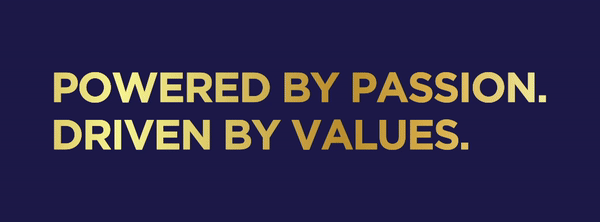Technical Circular No: 022/2023
1. IMO vide MSC. 474 (102) adopted amendments to SOLAS Ch.II-1, Reg. 3-8 which will come in to force from 1 January 2024.
2. Applicability of revised SOLAS Ch.II-1, Reg. 3-8 is as follows:
|
Date of Construction
|
Requirements |
|
Ships constructed on or after 1 January 2007
|
Existing requirements in paragraphs 4 to 6 of Regulation II-1/3-8 |
|
Ships for which: i. Building contract is placed on or after 1 January 2024; or ii. in the absence of a building contract, the keel of which is laid or which is at a similar stage of construction on or after 1 July 2024; or iii. the delivery of which is on or after 1 January 2027 |
New requirements in paragraphs 7 and 8 of Regulation II-1/3-8 |
| All SOLAS ships in operation, both existing (retroactive) and new, after 1 January 2024 |
New Requirements in paragraph 9 of Regulation II1/3-8 (Maintenance and Inspection) |
|
This regulation does not apply to towing arrangements provided in accordance with SOLAS II-1, Reg.3-4
|
|
3. Accordingly, ships with building contract on or after 1 January 2024; or constructed on or after 1 July 2024; or delivered on or after 1 January 2027 will be required to comply with following new requirements:
a. Ship is to be provided with arrangements, equipment and fittings of sufficient safe working load to enable the safe conduct of all towing and mooring operations associated with the normal operation of the ship meeting the appropriate requirements in MSC.1/Circ. 1175/Rev.1 – Revised Guidance on Shipboard Towing and Mooring Equipment.
b. Each fitting or item of equipment provided under this regulation are to be clearly marked with any limitations associated with its safe operation, taking into account the strength of the supporting ship's structure and its attachment to it.
c. For ships of 3,000 gross tonnage and above, the mooring arrangement is to be designed, and the mooring equipment including lines are to be selected, in order to ensure occupational safety and safe mooring of the ship, based on the guidelines provided in MSC.1/Circ. 1619. Ship-specific information are to be provided and kept on board.
d. Ships of less than 3,000 gross tonnage should comply with the requirement in paragraph ‘c’ above as far as reasonably practicable, or with applicable national standards of the Administration.
4. Further, all ships (ships constructed before, on or after 1 January 2007 ) will be required to comply with following new requirements in respect of inspection and maintenance of mooring equipment including lines with effect from 01 January 2024:
a. Mooring equipment, including lines, are to be inspected and maintained in a suitable condition for their intended purposes taking into consideration Guidelines in MSC.1/Circ. 1620.
b. Procedures for mooring operations, inspections and maintenance of mooring equipment, including mooring lines to be established and available onboard taking into account industry practices in MSC.1/Circ. 1620.
c. Procedures to allow the identification and control of mooring lines, tails and associated attachments is to be established and available onboard.
d. The periodic inspection of mooring lines, mooring line tails and associated attachments are to be included in the onboard maintenance plan or equivalent maintenance management system.
e. Manufacturers’ criteria for replacement of mooring lines are to be available.
f. Records of the original design concept, equipment, arrangement and specifications are to be available onboard.
Note: For ships the keels of which were laid before 1 January 2007 and without appropriate documentation, owners may establish the minimum breaking loads for Whilst the utmost care has been taken in the compilation of the Technical Information, neither Indian Register of Shipping, its affiliates and subsidiaries if any, nor any of its directors, officers, employees or agents assume any responsibility and shall not be liable to any person for any loss, damage or expense caused in any manner whatsoever by reliance on the information in this document. mooring based on the safe working load of mooring equipment provided onboard. If no safe working load is specified, then owners are advised to check strength of mooring equipment and their supporting hull structures based on MSC.1/Circ. 1175/Rev.1 and determine the minimum breaking loads based on the actual capacity of the equipment and their supporting hull structure on board. Manufacturer’s test certificates for mooring lines, joining shackles and synthetic tails should be kept onboard and properly linked back to the equipment, if available.
g. A document is to be provided on board for gathering the information above and describing how the information listed above is filed and collected.
h. Records of inspection and maintenance of mooring equipment and inspection and replacement of mooring lines should be kept updated and available on board.
5. Verification of compliance to above requirements will be undertaken at the initial survey for new ships and at the first periodical survey for the issuance of the Cargo Ship Safety Construction Certificate or renewal survey for the issuance of the Passenger Ship Safety Certificate on or after 1 January 2024 for existing ships.
6. Ship owners, managers, shipyards, ship designers and Masters are advised to be guided by above and consider these upcoming regulatory changes and guidelines when finalizing any new build designs. Further, ship owners and operators to ensure they have the required maintenance plans, procedures and records in place before these changes come into force.
Enclosure:
- IMO Res. MSC. 474 (102).
- MSC.1/Circ. 1619.
- MSC.1/Circ. 1620.
- MSC.1/Circ. 1175.
- MSC.1/Circ. 1175/Rev.1.
Disclaimer:
This Technical Circular and the material contained in it is provided only for the purpose of supplying current information to the reader and not as an advice to be relied upon by any person. While we have taken utmost care to be as factual as possible, readers/ users are advised to verify the exact text and content of the Regulation from the original source/ issuing Authority.








 Download PDF
Download PDF